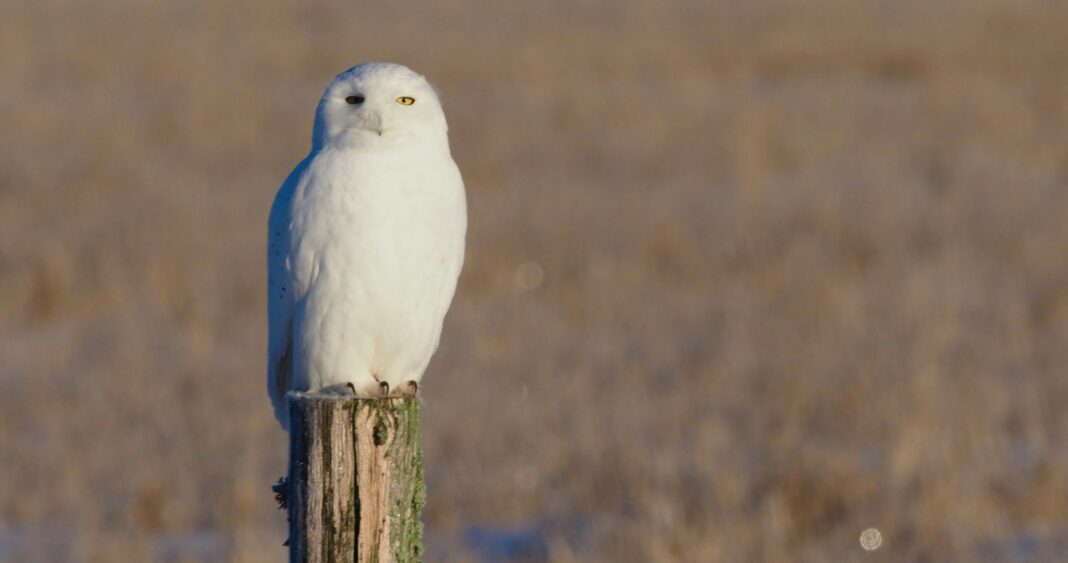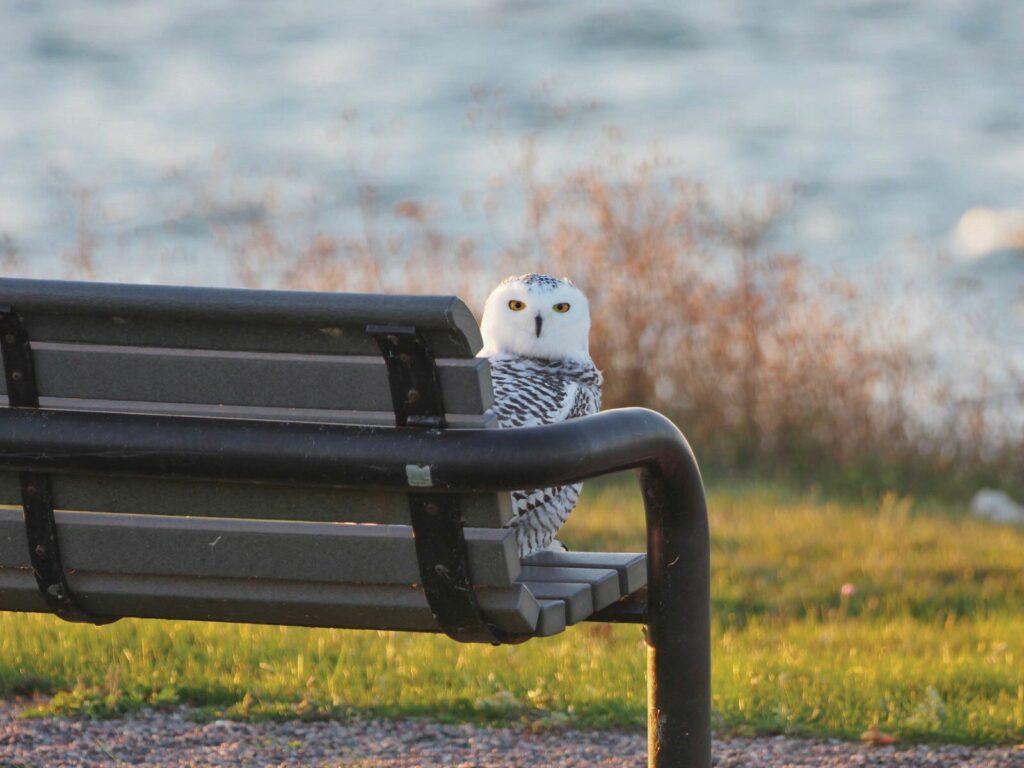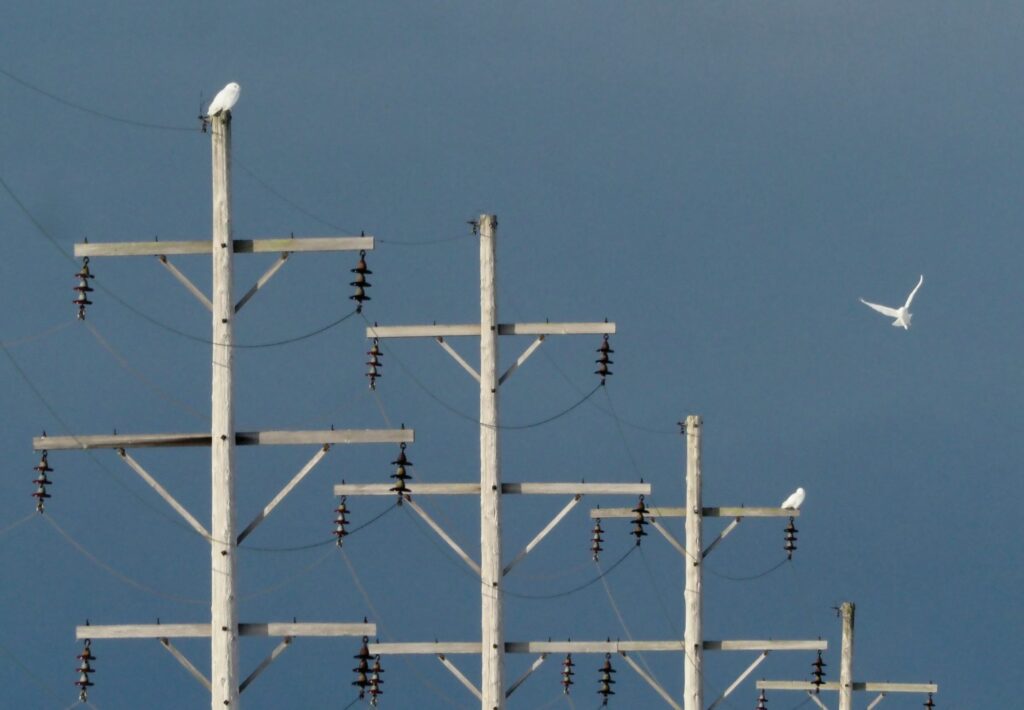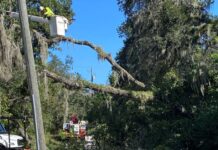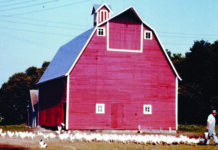By Yvette Pecha
Every winter, “snowbirds” who live in the colder northern parts of North America leave their three-season residences behind in a bid to escape the frigidness and snow. While they head to warm locales like Arizona, Florida, and Texas, there are actual snowbirds out there that seek out refuges a little less tropical. This is the reason elusive snowy owls can oftentimes be seen in Michigan—their own unique version of Florida.
Snowy owls live most of the year in the Arctic, and the majority of them stay there year-round. But from late October to December, in a phenomenon known as irruption, some birds will leave the tundra. Most will go to Canada and the northern United States, as well as parts of Asia and Europe. Every year is different—some years will see high numbers of the owls while, in others, you may be lucky to see one or two. “It waxes and wanes,” said Straits Area Audubon Society member Steve Baker.
Baker says that owls that migrate the soonest to Michigan tend to first congregate around the Great Lakes, where it is still warm enough for them to hunt for ducks and other waterfowl. “You’ll see them on the shorelines and on piers and other structures around the lakes,” he said. But once the water freezes, they’ve got to find a new hunting ground. “They’ll head for places with fields and other flat, open grounds,” Baker said. “There aren’t any trees in the Arctic, so they’re heading to places that look like home.” He said they’ll often perch on barns, hay bales, utility poles, and fenceposts, where they keep constant watch for prey, mostly meadow voles, which are similar to the lemmings they eat the rest of the year.
While snowy owls have been found throughout the state, the most populous areas for the birds are the eastern Upper Peninsula and northern Lower Peninsula. But if you want the absolute best shot at observing these raptors, you’ll need to head to a small UP community about 30 miles north of St. Ignace—Rudyard Township. Baker, who as a member of the Audubon Society contributes to the society’s annual Christmas bird count, said the count finds that Rudyard almost always has the highest number of owls. Snowy owls like hay fields, and Baker says Rudyard residents will be happy to tell you that they have the best hay crop in the world. “Their hay is actually shipped down to Florida for racehorses,” Baker said. He says because Rudyard has clay soil that doesn’t drain well, regular crops are tough to grow, hence the focus on hay. In January 2019, Rudyard proclaimed itself the Snowy Owl Capital of Michigan.
Baker, who lives in Indian River, Michigan, travels to Rudyard several times a week to glimpse these beauties for himself and take pictures (he is a contributing photographer to many websites/publications). Most people in search of the owls will look from their vehicles as they drive down the road. “You’ll sometimes just see a caravan of cars,” Baker said.
The town obviously welcomes visitors who want to see this rare bird for themselves, but it is expected that observers will adhere to a few guidelines. “These are beautiful, photogenic birds,” Baker said, “but it’s very important that people don’t do anything to harass them.” In general, he says spectators should be respectful, keep their distance, and be as quiet as possible. He says people who spot the owls while driving can get out of their cars, but they should not wander onto adjacent private land.
If you want to witness this spectacle, plan your trip to Rudyard before late March—that is when the owls typically leave for their Arctic home. Whether you’re in Rudyard or anywhere elsewhere the birds have been spotted, there are a few things you can do to increase your luck of seeing one. The best times to see them are at dawn and dusk. Look in structures that are low to the ground and also scan flat, snowy areas for irregularities. A dirty patch or lump just might be an owl facing away from you.
With their sleek white plumage, bright yellow eyes, and wingspans of up to four feet long, these feathered friends are certainly captivating. “They are beautiful and they’re just great fun to look at,” Baker said. “Whether you’re an avid birder or not, snowy owls are just one of those birds that people get excited about.”
THE LEMMING/SNOW OWL CONNECTION
In the Arctic, snowy owls feed on lemmings, which look like chubby hamsters. And they can eat a bunch—up to 1,600 a year! Because they’re so reliant on lemmings as a food source, their population cycles are linked. If lemmings are low, owls may wait to hatch young. Scarce lemming years translate into owl couples only having one or two offspring, and sometimes none at all. But lots of lemmings means Mom and Dad can provide for lots of babies, so they’ll lay more eggs. These baby booms typically result in irruption years, with the younger owls leaving in winter to avoid competing with adults for food. In peak lemming/owl reproduction years, young “snowie” sightings have been reported as far south as Texas and Florida.

